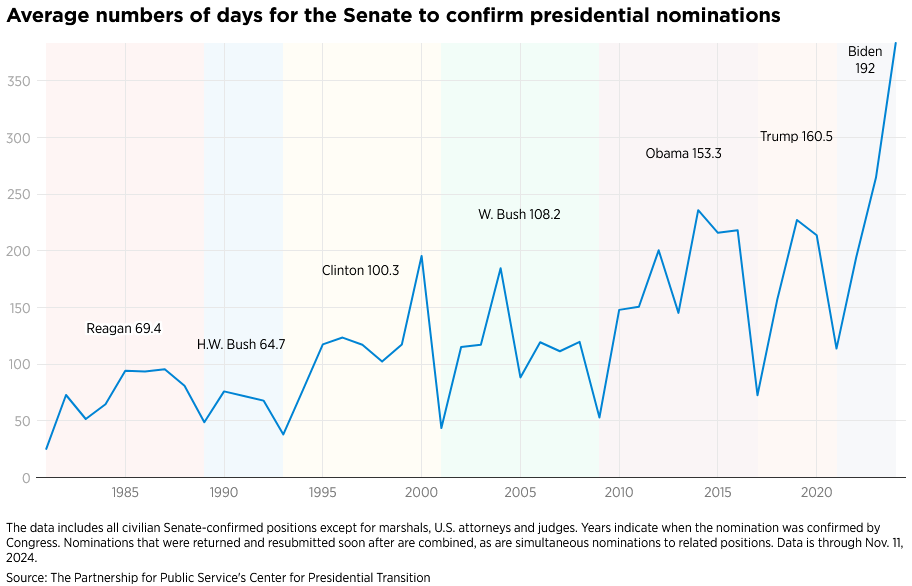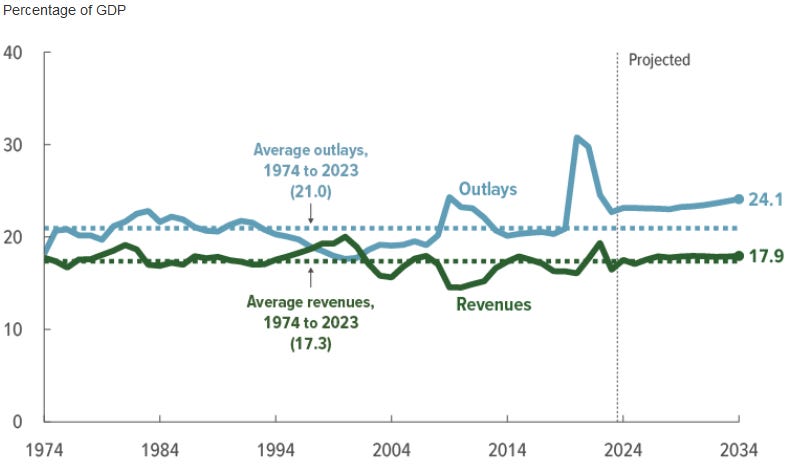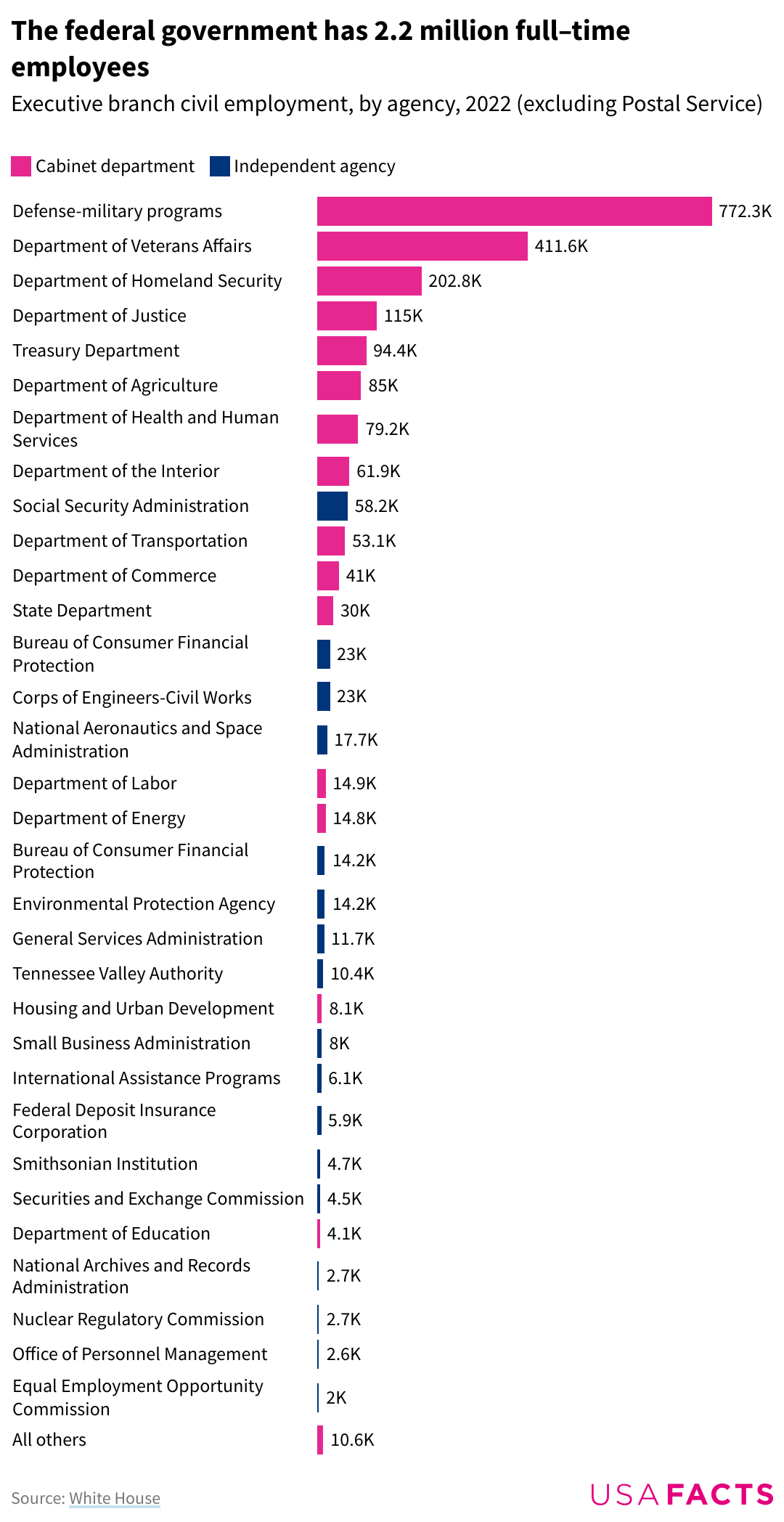Six-Chart Sunday (#44) – Clause-trophobia
6 Infographics from the week + 1 Video (Matt Lewis' Filthy Rich Politicians)
Clause-trophobia: (n) the fear that aggressive Presidential use of rarely-exploited legislative provisions will ride roughshod over democratic norms. Recent outbreaks occurred after President Obama’s creation of DACA, President Trump’s first-term border wall funding and President Biden’s $500B+ student loan forgiveness. One person’s Presidential over-reach is another person’s innovative problem solving, but many disputes over executive authority are imminent. This week’s charts examine six.
The Adjournment Clause: Article II, Section 3 of the U.S. Constitution says the President “may adjourn [Congress] to such Time as he shall think proper” if the House & Senate cannot agree on when to adjourn. When Congress is adjourned, Presidents can make recess appointments to fill jobs in the Executive Branch that otherwise require confirmation, as most modern Presidents did before Congress stopped formally adjourning (by maintaining pro forma sessions) to prevent it. Some fear the House may vote to adjourn in 2025 while the Senate declines, empowering President Trump to send them home and recess appoint whomever he wants, avoiding the increasingly time-consuming task of Senate confirmation (chart). Will the 119th Congress advise & consent or adjourn & relent? Stay tuned.
Impoundment: Title X of the Congressional Budget & Impoundment Control Act of 1974 prohibits the President from refusing to spend funds appropriated by Congress. In response to government persistently spending more than it takes in (chart from CBO), and seeking offsets for desired tax-cutting, President Trump says he will “use the president’s long-recognized Impoundment Power to squeeze the bloated federal bureaucracy for massive savings.” Can the President convince Courts to limit this Act or get Congress to modify or repeal it? Stay tuned.
Insurrection: The Posse Comitatus Act of 1878 bars Presidents from using the military for domestic law enforcement. The primary exception is provided by the Insurrection Act of 1792, if military forces are necessary to “suppress Insurrections and repel Invasions.” President Eisenhower invoked this exception to deploy federal troops to Little Rock Arkansas to protect students amidst school desegregation. President-elect Trump confirmed on Monday that he also intends to use the U.S. military to help with the mass deportations of undocumented immigrants, which Pew Research estimates at over 11M people (chart). Is the rising number of unauthorized immigrants an “invasion” triggering the Insurrection exception? Stay tuned.
Section 7511: The Pendleton Act of 1883 envisioned a professional U.S. civil service made up of experts who knew their fields, had to pass competence tests & could not be fired without due process. But the 1978 Civil Service Reform Act included a provision (now Section 7511 of Title 5 of the U.S. Code ) that stripped civil service protections for those “whose position has been determined to be of a confidential, policy-determining, policy-making or policy-advocating character.” There are 2.2M full-time federal employees (chart). Can President-elect Trump dismiss tens of thousands of career civil servants based on Section 7511, as he has vowed to do? Stay tuned.
Budget Reconciliation: The Congressional Budget Act of 1974 allows a bare Senate majority to overcome filibusters (chart) and pass bills that impact spending. Bills enacted using the reconciliation process include Clinton’s 1996 welfare reform; George W. Bush’s 2001 tax cuts; Obama’s 2010 Affordable Care Act, Trump’s 2017 tax cuts and Biden’s American Rescue Plan in 2021 and Inflation Reduction Act in 2022. Can President Trump & Congressional Republicans extend tax cuts & pursue other policy priorities (tariffs, immigration, permitting, border wall) using reconciliation in 2025? Stay tuned.
Trade After Loper Bright: While Congress delegated much trade policy authority to the Executive Branch, a 2024 Supreme Court decision (Loper Bright v. Raimondo) reduced agencies’ ability to interpret ambiguous legislation going forward. This could hinder President-elect Trump’s plans to to impose a 10–20% across-the-board tariff on imports & an additional 60% tariff on imports from China to deal with persistent U.S. trade deficits (chart). Will President Trump’s sweeping tariff plans pass legal muster or require new enabling legislation? Stay tuned.
VIDEO
Conservative political writer, blogger, podcaster, and columnist Matt Lewis wrote “Filthy Rich Politicians,” taking on the “The Swamp Creatures, Latte Liberals, and Ruling-Class Elites Cashing in on America.” We discussed & debated his findings.
h/t to Amy Mehlman for this week’s Six-Chart’s title. HAPPY THANKSGIVING WEEK TO ALL!










These great summaries, backed up by excellent charts, show some of the economic and constitutional arguments ahead of us. Most presidents want more power to "get things done." However, the legislative branch checks executive power and protects us against creeping authoritarianism.
Fabulous charts in here this week Bruce. Thank you!